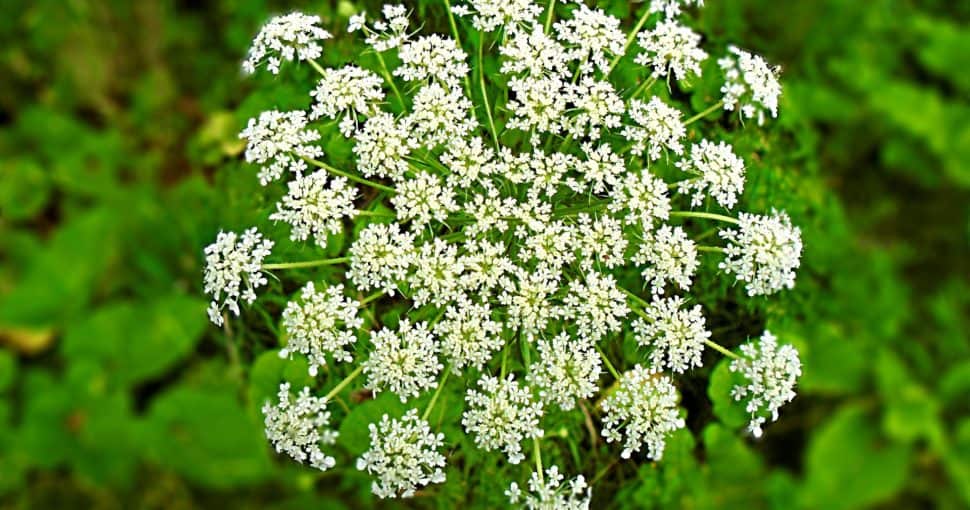Connecticut is home to a few varieties of poisonous plants. Some may look attractive, drawing more people, children, and animals toward them. Therefore, it’s important to be aware of your surroundings when you walk or bike outdoors. Touching some plants could lead to some grave consequences in some cases. In addition to that, you must be careful not to accidentally eat any part of some toxic plants, as some could even kill you if you eat too much of them.
Contents
- 1. Mistletoe (Viscum Album)
- 2. Philodendron (Philodendron)
- 3. Caladium (Caladium X Hortulanum)
- 4. Poinsettia (Euphorbia Pulcherrima)
- 5. Dumb Canes (Dieffenbachia)
- 6. Azaleas (Rhododendron)
- 7. Bloodroot (Sanguinaria Canadensis)
- 8. Belladonna/Deadly Nightshade (Atropa Belladonna)
- 9. Foxgloves (Digitalis)
- 10. Lily of the Valley (Convallaria Majalis)
- 11. Poison Ivy (Toxicodendron Radicans)
- 12. Poison Sumac (Toxicodendron Vernix)
- 13. Rhubarb (Rheum Rhabarbarum)
- 14. Canada Yew (Taxus Canadensis)
- 15. Giant Hogweed (Heracleum Mantegazzianum)
- 16. Angelica (Angelica Atropurpurea)
- 17. Cow Parsnip (Heracleum Maximum)
- 18. Poison Hemlock (Conium Maculatum)
This article discusses 18 poisonous plants in Connecticut. It provides descriptions of some, the types of areas you may find certain plants, and what types of symptoms you or animals may experience after touching or ingesting some parts of the plants. Some plants in this article are not native to Connecticut, but you can find them growing naturally or in gardens here too.
The purpose of this list is to help you learn more about the flora in your vicinity. It serves as an additional level of safety when you want to grow plants at home or walk in the woods on some days. So, here’s what you should know about some common toxic plants.
1. Mistletoe (Viscum Album)
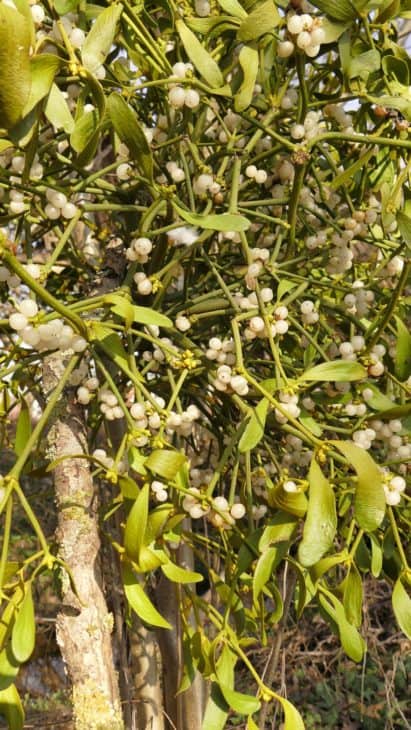
The mistletoe bush grows on top of various kinds of trees. It has leathery leaves that are shaped like long straps. The leaves and the stems on the mistletoe plant can be toxic, especially to pets and children. In addition to that, eating its berries can also be dangerous—fatal in some cases. The European mistletoe is another common name for this plant.
2. Philodendron (Philodendron)
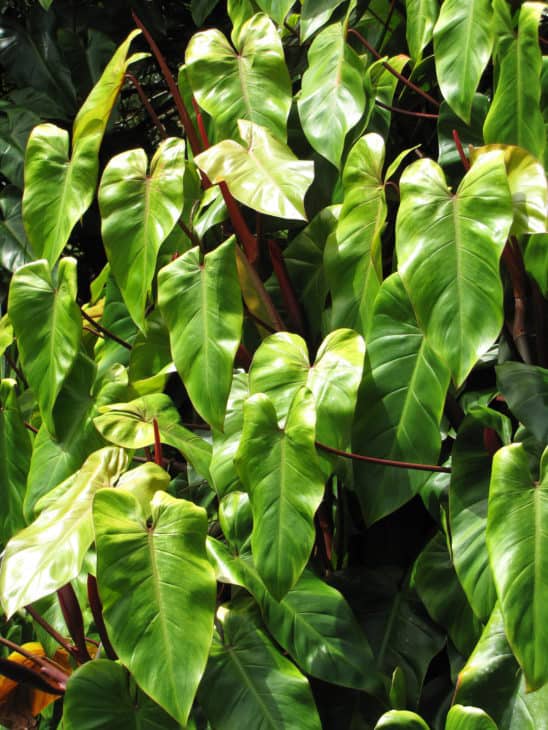
Philodendron is a large and tall perennial flowering plant, reaching a height of about 20 feet and width of 6 feet about at full maturity. That said, the different varieties can have different dimensions. Ingesting any part of this plant is toxic to animals and human beings. You can keep it as a houseplant, but you must take care not to let children or pets near it.
3. Caladium (Caladium X Hortulanum)
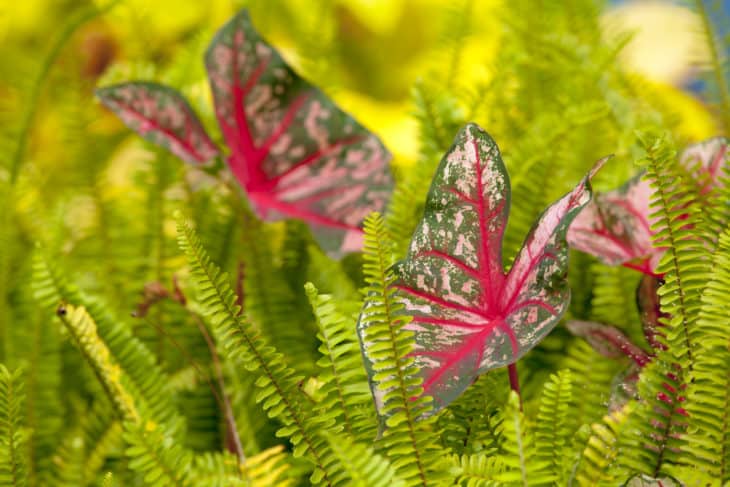
The caladium plant has large and beautiful leaves shaped like hearts. These leaves are its most unique feature, as they can look better than some flowers. The plant contains a sap that causes skin irritation when touched. Children and pets are most vulnerable to these plants, so keep them separate in your garden. Another common name for the caladium plant is elephant ears.
4. Poinsettia (Euphorbia Pulcherrima)
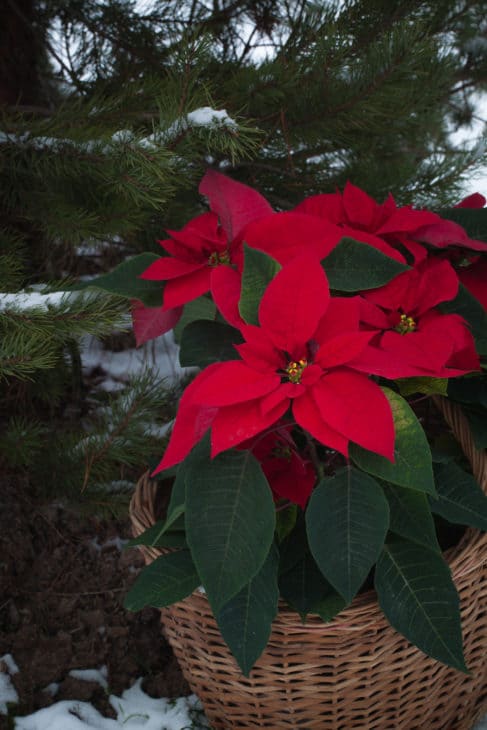
The poinsettia plant has red and green parts, which makes it a common Christmas floral display. However, the plant is poisonous in many cases. Ingesting it or touching it in excess may lead to symptoms such as diarrhea, nausea, and vomiting. In some cases, touching the plant may not have any effect on you. However, you may not want to take any unnecessary chances.
5. Dumb Canes (Dieffenbachia)
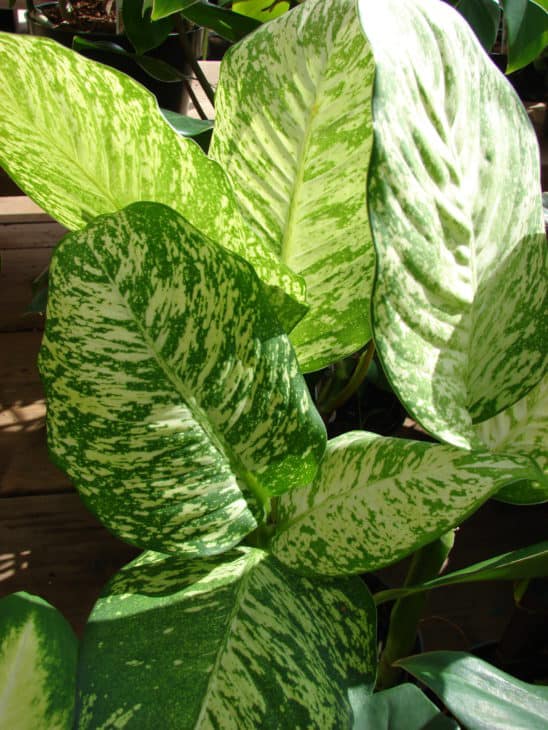
The dumb cane plant is easily identifiable by its unique wide and bushy leaves. The plant also only grows to about 6 feet in height, which is why many people keep them in their homes. If you plan to do that, you should know that pets, specifically cats and dogs, can be poisoned by this plant. Children are also at risk.
6. Azaleas (Rhododendron)
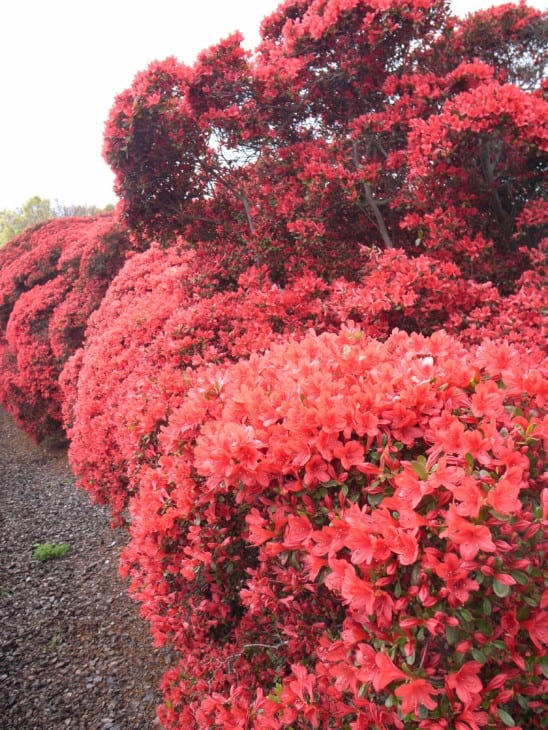
This azalea is an evergreen plant that has tubular flowers clustered together. The flowers’ colors have various colors ranging from purple to pink, making it a pretty sight. The plant can cause abdominal pain, nausea, vomiting, breathing problems, and more among people and animals when ingested. This plant has a reputation for being poisonous to Russian tortoises. So, the poisoning starts with a few symptoms and eventually kills the animal.
7. Bloodroot (Sanguinaria Canadensis)
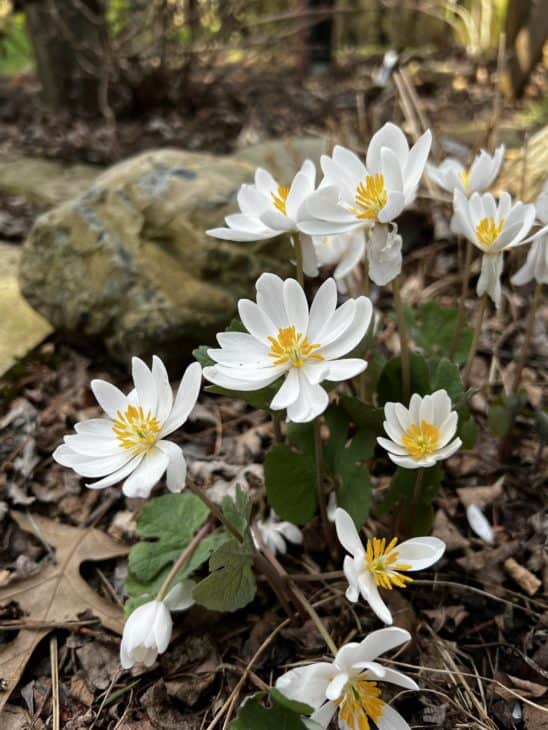
Bloodroot is a perennial flowering plant that’s usually found in early spring. It has attractive white flowers, and you can find this plant on sunny slopes or woodlands. The root of this plant is the most toxic part because it has a bitter, red sap that may even lead to cardiac paralysis if ingested. Moreover, the plant’s juice can irritate the eyes and skin.
8. Belladonna/Deadly Nightshade (Atropa Belladonna)
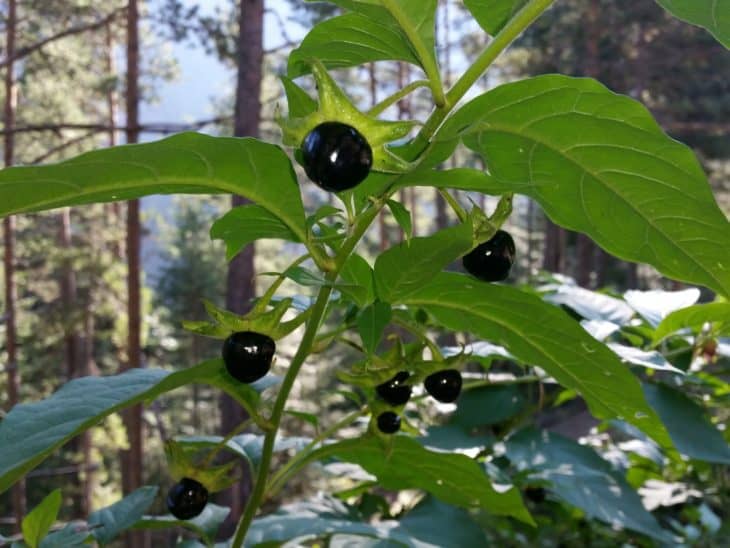
The belladonna plant (or deadly nightshade) has bright red and oblong fruits that look like berries. It also sports yellow and purple flowers. In addition to that, you may be able to tell that you’re near a belladonna plant because of its distinctive foul smell. This plant typically grows in shady areas or woodlands. Elevated pulses and paralysis are common when pets eat the plant.
9. Foxgloves (Digitalis)
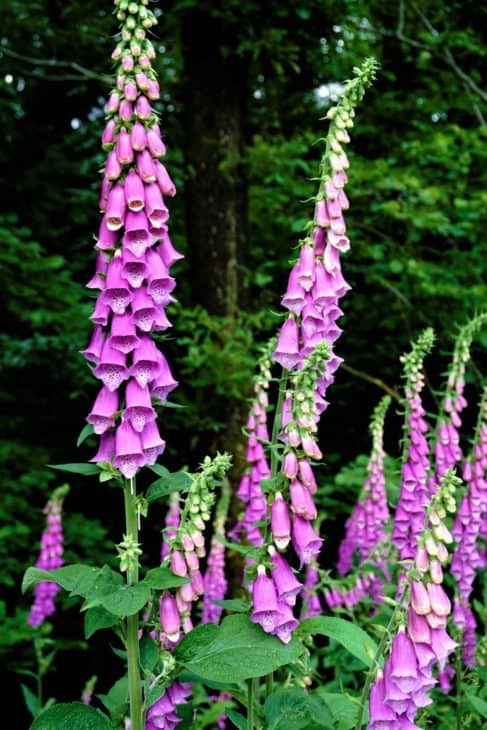
A foxglove plant has various colored flowers, giving it a unique appearance. The flowers can be pink, white, yellow, and rose. It also has unique drooping, tubular flowers with spots in every tube. This plant is toxic to people and animals. In the case of the former, touching the plant could lead to symptoms such as weakness, headaches, abdominal pain, diarrhea, nausea, rashes, or blurred vision.
10. Lily of the Valley (Convallaria Majalis)
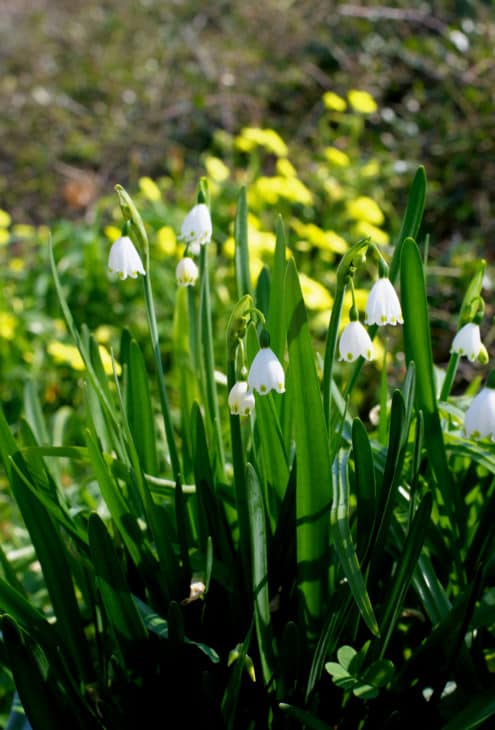
The lily of the valley plant has white flowers that look like small bells. These flowers have a distinctive, sweet smell, which can sometimes attract people and animals. Touching the plant may not have any adverse effects, but it can be poisonous for people and animals to eat any part of the plant. Nevertheless, try to stay clear of it to be safe.
Alternatives: 9 Plants That Look Like Lily of the Valley
11. Poison Ivy (Toxicodendron Radicans)
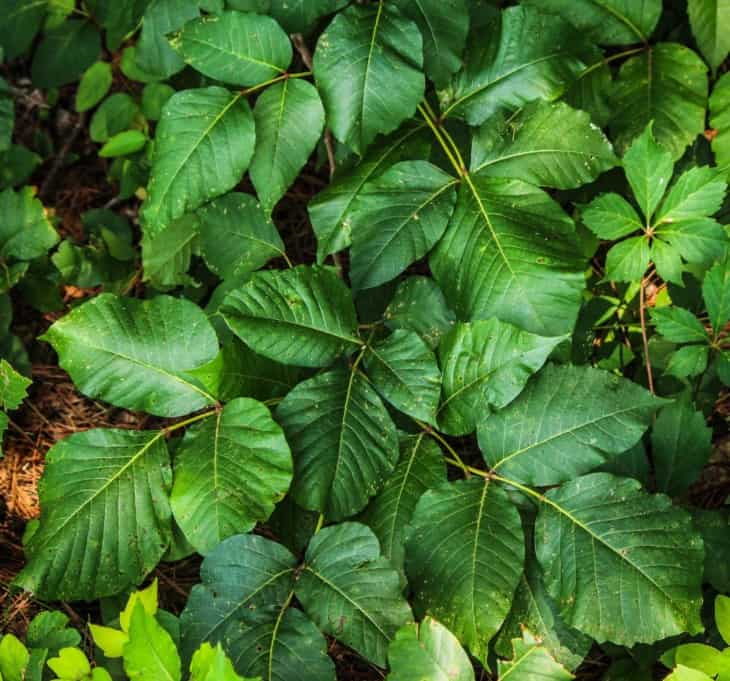
The poison ivy plant is a shrubby or climbing vine that may change color with seasonal changes. It has small white berries and non-lobed, smooth leaves with shiny green leaflets in the summer. This plant is often mistaken for poison oak, but they are different. Both these plants, however, can lead to severe dermatitis. Smoking or burning it is also dangerous.
12. Poison Sumac (Toxicodendron Vernix)
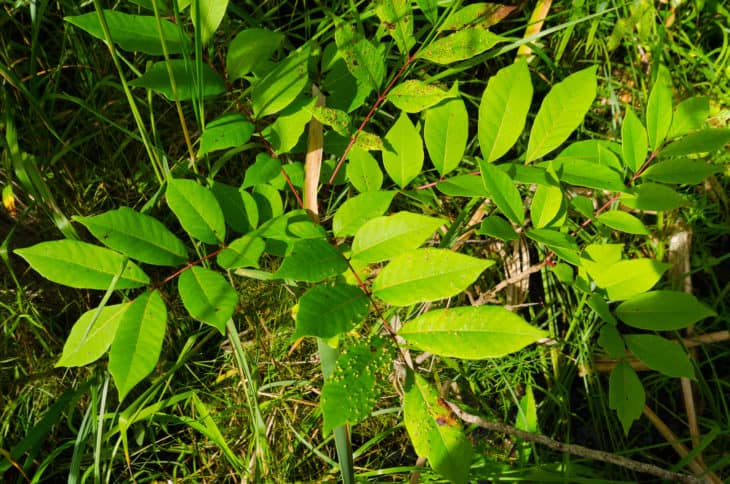
Poison sumac is a shrub with 7 to 13 leaflets on every stem. The leaves on the plant have pointy tips. You can also find small white or gray berries on the plant. Poison sumac is most commonly found in swamps and other wetland areas. Burning poison sumac releases toxic fumes that may lead to harmful skin conditions or breathing problems.
13. Rhubarb (Rheum Rhabarbarum)
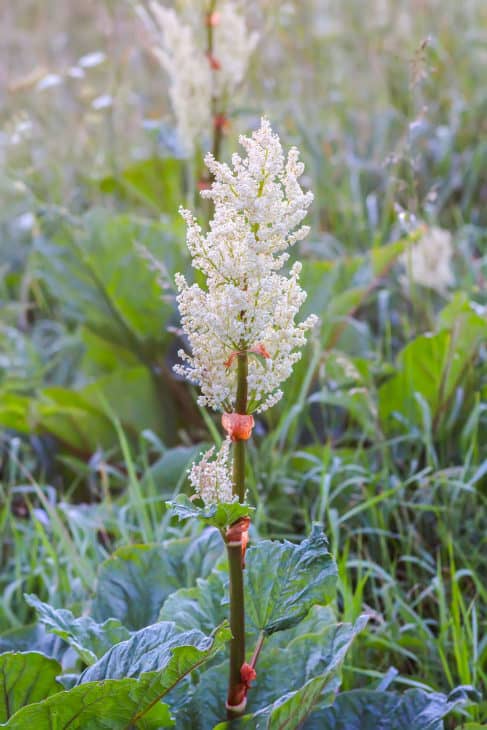
The leaf blade of the rhubarb plant is highly poisonous. It contains soluble oxalates and oxalic acid that is lethal to human beings even in small doses. Many people and livestock have been poisoned by eating the leaf blades of this plant in the past. The poisoning may result in symptoms such as excessive salivation, abdominal pain, vomiting, and even death by convulsions.
14. Canada Yew (Taxus Canadensis)
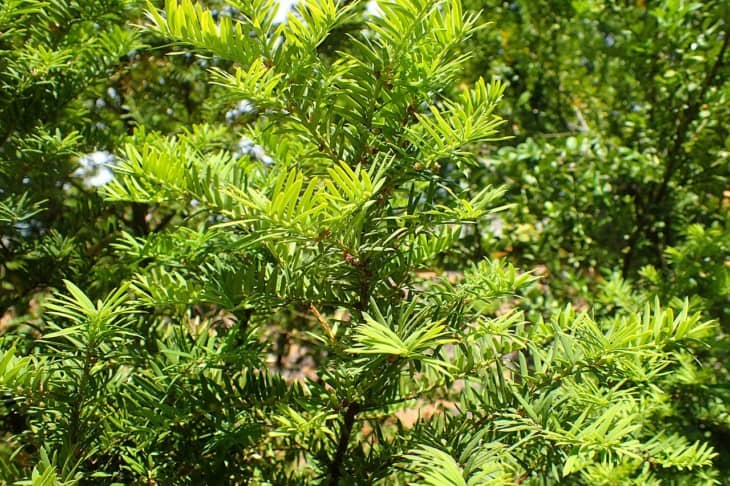
The Canada yew plant, also known as the American yew, is a shrub that grows to a height of a little over 6 feet. It has thin, reddish bark and pale green leaves. The plant is commonly found in col ravines, forested swamps, and talus slopes. Other than the aril, all parts of this plant are toxic to people and animals.
15. Giant Hogweed (Heracleum Mantegazzianum)
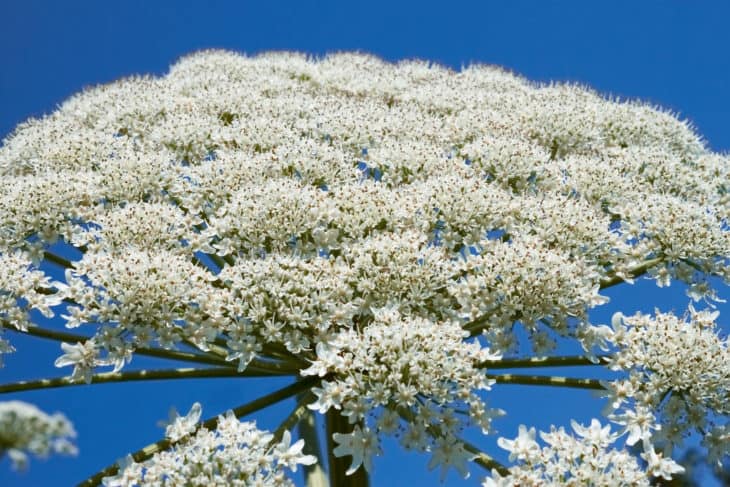
The giant hogweed plant has green stems with purple blotches and white hairs over them. It grows to about 14 feet in height at most. The plant also has white flowers clustered together. Touching the plant could lead to poisoning. It can affect your skin in less than 15 minutes, but painful dark blisters usually develop around two days after being exposed to giant hogweed.
16. Angelica (Angelica Atropurpurea)
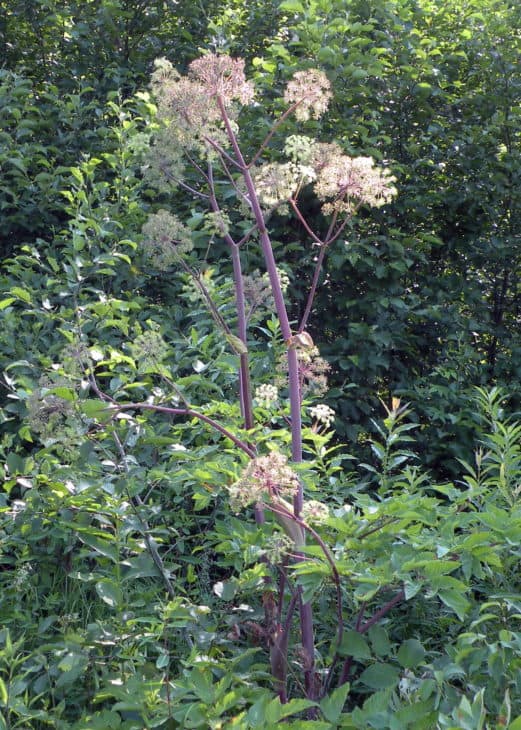
The angelica plant has many alternate names, including masterwort, high angelica, American angelica, purplestem angelica, and more. The plant is about 6 feet in height at full maturity with erect stems that are smooth, sturdy, and hollow. You can find this plant in wetlands, river bands, and some fields. The plant may be toxic to animals, including cats and dogs.
17. Cow Parsnip (Heracleum Maximum)
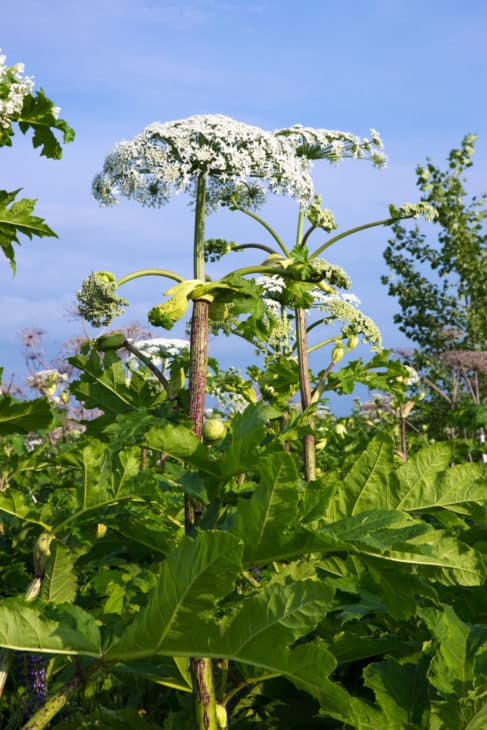
The cow parsnip plant grows to about 10 feet tall when fully mature and has white flowers present in clusters of about 30 flowers. This plant is typically located in moist fields with part shade and sunlight. Streambanks are another common area where the plant is found. The plant can cause rashes if it touches your skin and then reacts with sunlight.
18. Poison Hemlock (Conium Maculatum)
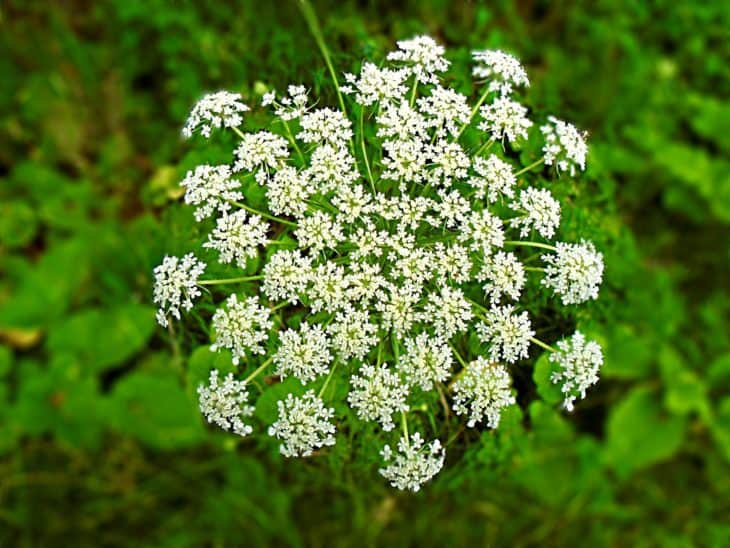
Poison hemlock is a biennial herb that grows to about 8 feet in height. It has smooth and hollow stems that are typically mottled with red or purple with stripes. This plant is extremely toxic when eaten, as 8 leaves are enough to kill a person. It’s found in different parts of the United States and can spread easily.

